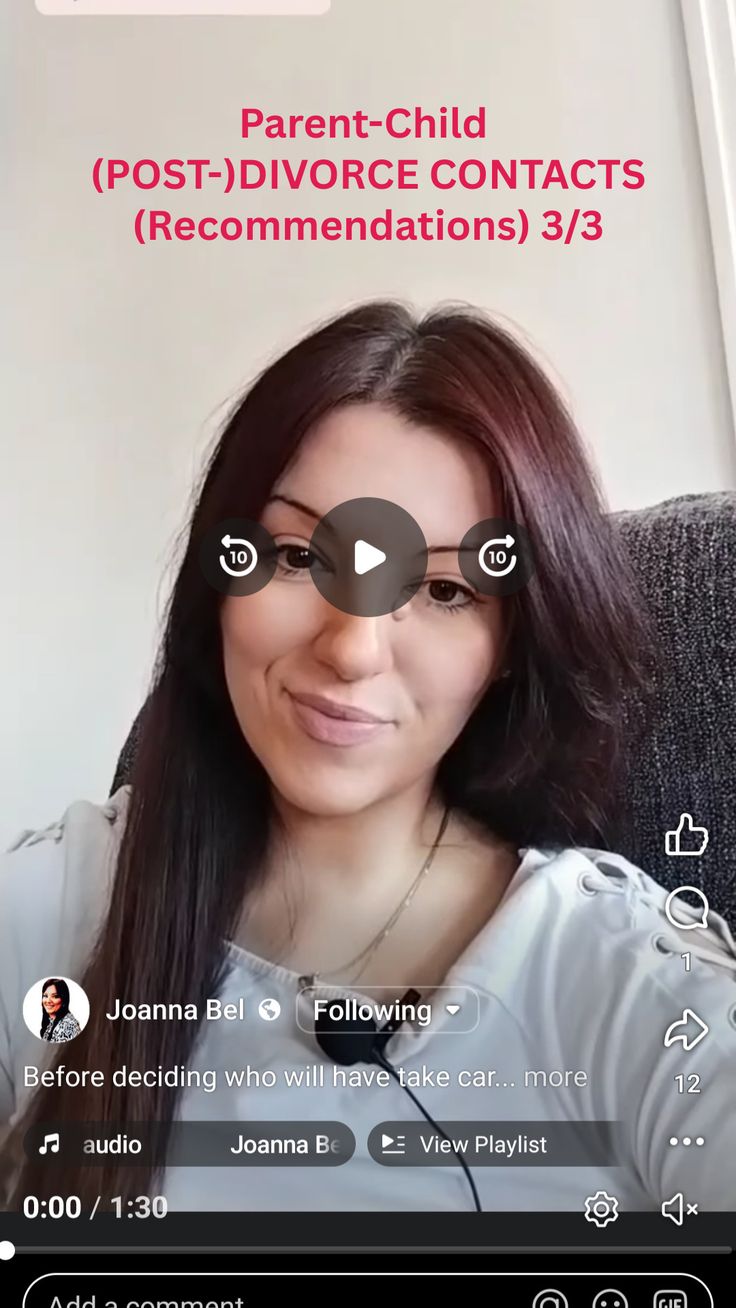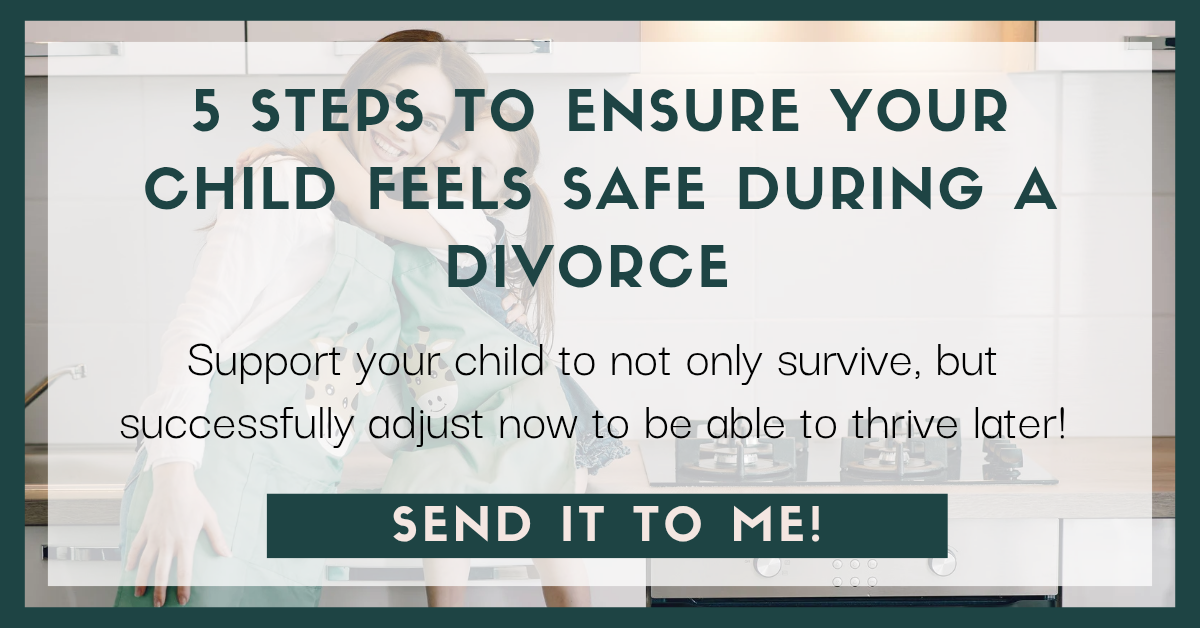Navigating contact schedules with children after divorce can be a delicate balance, especially when focusing on maintaining strong relationships rather than merely organizing “visitation.” After a separation and divorce, ensuring that both parents continue to play an active role in their child’s life supports the child’s stability and well-being.

Post-Divorce Contact Schedule Standard
However, every family’s needs are unique, and no outside party understands these dynamics better than the parents themselves.
This short guide on post divorce contact schedule standards provides practical advice on structuring contacts suitably for each age group, along with essential reminders on communication and cooperation to help parents build a plan that works for everyone.
Let’s get to it.
Hi, I’m Jovana, a Clinical Social Worker. Everything I share is based on years of formal education, research, and practical experience working with a justice system supporting parents and children go through the divorce process feeling safe and secure – even when family dynamics change – making confident decisions pre, during, and post divorce.
POST DIVORCE CONTACT SCHEDULE STANDARD – WHAT REASONABLE ‘PARENTING TIME’ / ‘VISITATION’ FOR NON-CUSTODIAL PARENT IS

First of all, we should forget about visitation as a term here, considering that no one is visiting anyone here. We’re talking about the continuity of the relationship and contacts between parents and children after separation and divorce. Not about letting the child or parents be in contact, as nobody is entitled to allowing or preventing those contacts from taking place.
This is what they’re entitled to, unless there’s an objective safety threat where contacts need to be restricted, at least for a short amount of time, strictly (only) through a court order clearly defining that contacts are being restricted.
There are certain guidelines that you should take into careful consideration when it comes to defining the schedule of your regular contact with your children after the divorce once living arrangements are settled.
Please do consider the guidelines of the experts on child development, but know that no other person or party will be able to suggest or create a better plan than you and your child’s other parent can. This is true if you’re able to establish and maintain good co-parenting cooperation and communication and if you’re conscious enough of the child’s best interests.
Read also: How To Divorce Without Hurting Your Child – 6 Crucial Principles To Follow
All of you (including the child) are experts in your situation.
Let’s now talk about guidelines concerning child-parent post-separation contact structure (‘parenting time’ guidelines). But before we do that, since you are one of those parents who care deeply about your child’s well-being, consider getting my FREE 3-day mini crash course 5 Steps To Ensure Your Child Feels Safe And Protected During A DIVORCE, if you’re ready to help your child thrive not only survive after this transition. Sign up below:
Moving on to our guidelines. Let’s talk about structuring contact (parenting) plans based on a child’s age.
1. Babies and infants (under 1 year old) contact structure
Contacts between the child and parents should be scheduled as frequent as possible. This time together doesn’t have to last for too long, short encounters are fine, but they need to be frequent.
So create a plan based on your objective availability to meet the “criteria” of frequent.
This age group of children forgets and may have trouble establishing a bond when the contact is interrupted. If this has happened, don’t fear; just do what you can to establish a routine when your circumstances allow it.
2. Young children contact structure
Contacts between parents and children should be frequent in case of young children, with a special emphasis on the age group of 1-3 years old.
Additionally, remember that it’s important to include contacts with other relevant people in their lives, as they now have raised awareness of their social circle and tend to rely on them besides the parents, especially those over 3 years of age.
If the communication and contacts with their other relatives aren’t safe for any reason and these folks have the right to see the kids (like their grandparents), they can be limited or restricted. However, only a court order can do this legally anr legitimately.
Read: DIVORCE: WHAT IF A CHILD PREFERS ONE PARENT (HOW TO RESPOND).
3. School-age children (6-12) contact structure
Children in this age group are very adaptable, so what will mostly come into play here is the quality of the contact and how meaningful the relationship and contact are. And since these kids operate with technology easily, there’s a vast array of options.
You shouldn’t worry if you are able to only see them every other week or every other weekend because of your schedules, as they can rely on the other parent, plus they can keep in touch using technology.
This won’t interrupt the continuity of the relationship unless the contacts are devoid of meaning, quality, and true connection.
When this is the case, unfortunately, it will matter less how often (frequent) you see each other, as they and/or you may experience disappointment and dissatisfaction, regardless of the quantity or regularity of the contacts. Especially in the case of adolescents.
Speaking of which…
4. Adolescents (10/12-19) contact structure
With adolescents the frequency plays an even smaller part.
So they can spend more time separated (weeks), especially since in this period their peers become the center of their attention and they need more monitoring and less “managing” and directing from you.
How You Can Structure Contacts In Case Of A Shared Decision-Making Responsibility (Joint Custody)
Just keep in mind that these are only general recommendations and are just a base to build upon, not something to just take literally and copy-paste. No court can define a parenting plan and contacts between parents and children like you and your co-parent can if you’re willing to collaborate and join forces for your child’s best interest.
In the case of ’50/50 custody’ you can split the week in half for 3-4 year-olds and older. For younger children, it’s best to have contacts that are frequent even if they’re short-lasting. This suggests that you can expect more frequent switches between houses during a week the younger the child.
All of this is only beneficial for the child if there’s a close proximity of the homes, since switches shouldn’t cause exhaustion for children, especially in combination with school and other obligations.
For older children they can switch houses weekly if it’s more convenient than splitting the week in half. For older children, such as adolescents (12+), they can spend weeks separated from you or your co-parent, especially since they can use technology in between contacts. (Young children know how to use tech as well, but technology it’s not enough for a secure connection.)
How You Can Structure Contacts In Case Of A Sole Decision-Making Responsibility (Sole Custody)
When one parent has greater decision-making responsibility, the classical contact schedules tend to have children spending every or every other weekend with a non-custodial parent. In case of every other weekend, it’s good to plan the time for contacts for the week when they’re not coming for a weekend.
When defining contacts, no matter the decision-making responsibility type, consider work hours/days and children’s school time and other activities they have regularly. Additionally, define holidays and birthdays – parents’ and child’s/children’s (usually every other holiday and child’s birthday).
Don’t Forget To Consider The Child’s Wants And Schedule While Defining Post Divorce Parent-Child Contacts
Even though you’re free to structurize contacts the way you want, which isn’t hard when you are in good communication and cooperation with the child’s other parent, you still need to create routines and schedules so that there’s more predictability and less risk of creating chaos and uncertainty in contacts and connections.
Furthermore, you must respect both your and your child’s time and schedules equally.
This means that you have to have flexibility for their wants and desires, which sometimes won’t include you and will be focused on other people, but you shouldn’t take this personally if there’s no objective reason to believe it’s about you.
If you’re unsure, please communicate with your child to eliminate any threats to the regularity and continuity of contacts and connections.
To secure the divorce process is kind to your child, get my FREE 3-day mini crash course 5 Steps To Ensure Your Child Feels Safe And Protected During A DIVORCE. This will enable them to not only survive, but adjust successfully now to be able to thrive later. Click below to sign up:
5 STEPS To Ensure Your Child Feels Safe During A DIVORCE (adjusting now to thrive later)
Latest Posts:
- Simple Safety Measures To Protect Your Family

- The Biggest Benefits Of Adopting A Dog For Your Family (5)

- How To Turn Crafting Into Family Fun Time (6 Ideas)

- Creative Ways To Play With Kids Without Technology

- How To Make Gift-Giving More Special For Kids (4 Ideas)

- How To Do A Prenup Online (What To Expect)

FINAL THOUGHTS ON CONTACT SCHEDULE AFTER SEPARATION AND DIVORCE
Creating a flexible, thoughtful contact schedule is key to building a strong post-divorce relationship with your child. By focusing on consistent, meaningful contact and open communication with your co-parent, you can design an arrangement that respects everyone’s needs.
Flexibility and respect make the transition smoother, fostering a stable environment where your child feels connected and valued.
I hope you found this helpful! If you want to know how to make divorce easier for the child, read my post How To Make Divorce Easier For The Child – 6 Non-negotiables.

Note: Although I am a Clinical Social Worker, engaging with this website does not establish a professional social worker-client relationship. The information provided here is for general purposes only and should not be considered professional advice. While we strive to ensure accuracy and reliability, this content is not a substitute for professional guidance. For specific concerns, issues, or situations, it is essential to consult a qualified professional and present your situation. Read the full Disclaimer here.












Leave a Reply